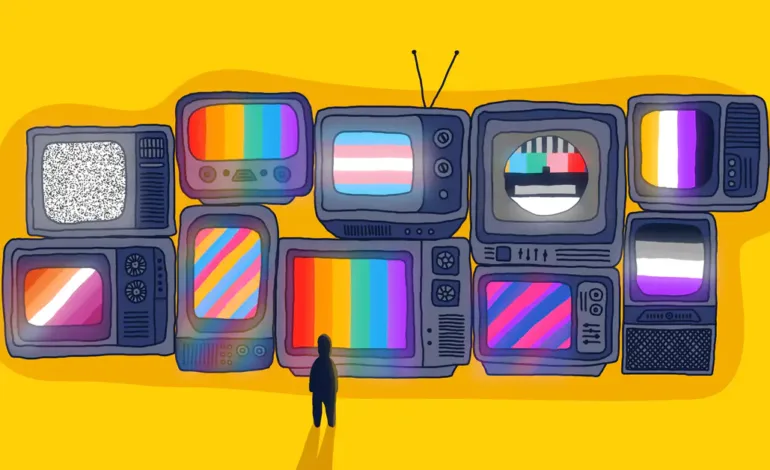Tokenism. It’s the cinematic equivalent of a half-hearted gesture, like slapping a rainbow sticker on a product and calling it a day. When it comes to LGBTQ+ representation, tokenism often manifests as the inclusion of a token character or moment to give the illusion of diversity and inclusivity, without any genuine commitment to supporting LGBTQ+ rights or addressing their real needs.
Consider the 2017 film “Beauty and the Beast,” where Disney proudly advertised an “exclusively gay moment” involving LeFou briefly dancing with another man. This fleeting scene, more of a nod than a substantive addition, felt like a checkbox rather than a meaningful representation. Similarly, “Avengers: Endgame” featured a minor character, played by director Joe Russo, who casually mentioned having a date with another man. This brief mention, lost in the vast ensemble, was seen as a minimal effort to include LGBTQ+ representation without making a significant impact.
Corporate marketing can often fall into the same trap. During Pride Month, many companies release rainbow-themed merchandise, but this effort frequently fails to translate into year-round support for LGBTQ+ causes. This performative allyship, also known as rainbow-washing, is a superficial attempt to align with LGBTQ+ visibility without substantial backing. High-profile events like the Super Bowl sometimes feature LGBTQ+ themes in advertisements, but these moments can be fleeting and starkly contrasted with the company’s usual policies and practices.
In the political sphere, tokenism can be seen when politicians highlight their support for LGBTQ+ rights during campaigns by featuring LGBTQ+ individuals or attending Pride events. However, once in office, their commitment often falters, resulting in a gap between their public endorsements and actual legislative action.
Workplace diversity initiatives sometimes mirror this superficial approach. Companies may hire a few LGBTQ+ employees to meet diversity quotas or enhance their public image, yet fail to foster an inclusive environment or offer equal opportunities for advancement. This approach reduces real change to a mere PR stunt.
Even the entertainment industry, which prides itself on progressiveness, is not immune to tokenism. “Star Wars: The Rise of Skywalker” included a brief same-sex kiss during a celebratory scene, a moment that was easily edited out for international audiences. Disney-Pixar’s “Onward” featured a minor character, Officer Specter, who mentioned her girlfriend in passing—another example of minimal LGBTQ+ representation that did little to influence the plot. Similarly, in “Finding Dory,” the brief mention of a potential lesbian couple in the background generated more buzz than substantive representation.
“Jungle Cruise” included a character, McGregor, who vaguely referenced being gay, but this subtlety was criticized for lacking depth. The “Harry Potter” series saw J.K. Rowling reveal post-publication that Dumbledore was gay, a detail not evident in the books or films, which sparked debates about the authenticity of such representation. “Power Rangers” included a scene where the Yellow Ranger hinted at her attraction to the same sex, but this was so brief it felt tokenistic rather than meaningful.
Even shows that attempt to be inclusive, like “Supergirl” with the introduction of Nia Nal (Dreamer), a transgender character, face criticism. Despite the positive step of casting a transgender actress, other LGBTQ+ characters in the series were sometimes reduced to tokenism due to lack of development. Similarly, “Doctor Who” has included LGBTQ+ characters like Captain Jack Harkness, yet some story arcs fail to fully explore these identities, reducing their presence to tokenism.
In “The Simpsons,” the character Smithers was confirmed as gay, but his portrayal has often fallen into stereotypes without deeper development. “Friends” included Carol, Ross’s ex-wife, and her partner Susan, whose relationship frequently served as a backdrop for jokes rather than meaningful exploration.
In these instances, LGBTQ+ representation often feels superficial and lacks depth, underscoring the persistent issue of tokenism. For true inclusivity, it’s essential to move beyond these token gestures and commit to genuine, substantive representation that reflects the complexity and richness of LGBTQ+ lives.
